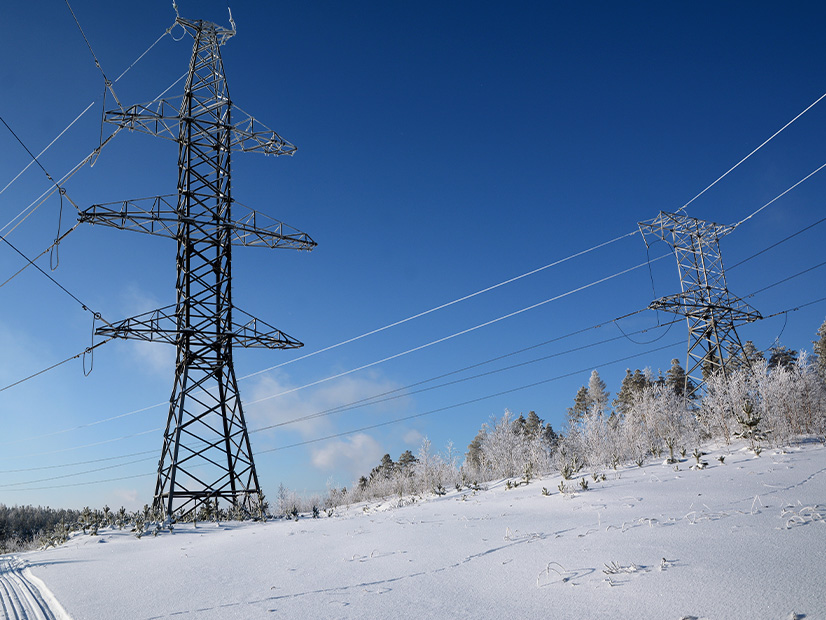The team revising NERC’s cold weather standard has more work ahead after industry respondents put the freeze on their latest proposed revisions with a negative segment-weighted vote of more than 56%.
The standards development team (SDT) revising NERC’s cold weather standard has more work ahead of it after industry respondents put the freeze on their latest proposed revisions with a negative segment-weighted vote of more than 56%.
The comment and formal ballot period for EOP-012-2 (Extreme cold weather preparedness and operations) — and its implementation plan — closed Thursday. The revised standard received 101 votes in favor from members of the selected ballot body, while 141 voted against it; 31 abstained, and 28 did not respond.
EOP-012-2 is intended to revise EOP-012-1, which FERC approved in February along with EOP-011-3 (Emergency operations). (See FERC Orders New Reliability Standards in Response to Uri.) Both standards were created by Project 2021-07 in response to the recommendations in FERC and NERC’s joint inquiry into the 2021 winter storm that nearly led to the collapse of the Texas Interconnection. They require generator owners (GOs) to implement several measures to prevent their units from freezing during extreme cold weather events.
In its order, the commission criticized EOP-012-1 for including “undefined terms, broad limitations, exceptions and exemptions, and prolonged compliance periods.” It directed NERC to clarify these issues while adding a deadline for completing corrective action plans and a shorter grace period for GOs’ implementation than the five years originally given. After the SDT for Project 2021-07 revised the standard, NERC’s Standards Committee approved its submission for comment and ballot in a special call last month.
Respondents Call Revisions Unclear
In addition to giving their approval on the overall standard, respondents also addressed the SDT’s questions about specific language and requirements incorporated into EOP-012-2. These included:
-
- whether the proposed definition of generator cold weather constraints — technical, operational or economic limitations that would prevent GOs from implementing freeze protection measures — provided the clarity the FERC order required;
- whether the standard meets FERC’s recommendation that GOs account for the cooling effects of precipitation in their temperature data; and
- whether the two timeframes proposed in the standard for corrective action plans — 24 months for addressing existing equipment or freeze protection, and 48 months for implementing new equipment or freeze protection — are appropriate.
Responding to the first question, Thomas Foltz of American Electric Power said the proposed definition of “commercial constraint” still lacks clarity. The standard — which states that a commercial constraint exists when implementing freeze protection would result in the unit not being in service at the time of evaluation — leaves open the question of what utilities should do about equipment reaching the end of its life, Foltz said. That could leave utilities that decide not to implement expensive modifications on nearly retired units open to the accusation of “choosing economics over reliability.”
Foltz suggested revising the definition to include measures that “require unreasonably expensive modifications [or] significant expenditures on equipment with minimal remaining life.”
Regarding the requirement to account for precipitation in temperature data, Robert Follini of Avista said the standard would require utilities “simply … to perform a wind chill calculation, with an ambiguous 20-mph wind speed.” Follini pointed out that because “some regions or facilities are more protected from wind effects than others, and there is no direct correlation between extreme cold weather temperatures and wind,” the requested number likely would have little relevance to utilities’ practical winter preparations.
Finally, Donald Lock of Talen Generation objected to the timeframes for corrective action plans, saying “it is impossible to fully understand what it is that a generator owner is being asked to do at this time” because of ambiguity in the other requirements of the standard and the large number of generating facilities and units with which an entity might have to deal.
He said that while some of NERC’s other standards require similar timeframes, those typically refer to a much smaller number of units and a much smaller scope of action. Lock concluded that it isimply is not possible to say with certainty how long a retrofit campaign involving an entire generation fleet might take, and therefore the inclusion of such a requirement would be a mistake.


